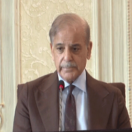By Dr Naazir Mahmood
Published in The News on November 09, 2021
It was a good experience to conduct a session with some women parliamentarians in Islamabad in the last week of October. Most of these representatives of the people were first-time parliamentarians, but their immense desire to contribute to improving parliamentary democracy in Pakistan was impressive.
The Human Rights Commission of Pakistan (HRCP) and Friedrich Naumann Foundation (FNF) are doing commendable work by organising workshops for women parliamentarians and members of provincial assemblies from across the country. This column is an attempt to give my readers some orientation about the valuable work our women legislators have been doing. HRCP and FNF have also published reports on women legislators’ political participation. The purpose of such reports is to recognise the capacity and potential of women political leaders and legislators. Such studies give us details about how women have participated and performed in the country’s national and provincial assemblies.
There can hardly be any doubt about women’s potential to participate in politics; this is essential for advancing gender equality so that some related policy issues come to the fore. This is perhaps the only way to propose different types of solutions that may have an impact on national and provincial assemblies’ priorities. If our political parties want to have some gender-sensitive policymaking, they need to elect, nominate, and even select more women for representation. If more women are elected to office, there is a greater chance of more serious and sober work for legislation.
This is significant not just for promoting and protecting the human rights of families, minorities, and women. It has its own value when the Women’s Parliamentary Caucus starts influencing legislation on women’s rights. Underrepresentation of women in the economic and political decision-making process hampers progress to meet development goals. Building democracy requires a strong and sustainable presence of women in the political process. Without this participation the fundamental rights of all citizens are likely to remain unprotected and vulnerable. Without empowering and encouraging women to empower themselves they cannot become activists and community leaders.
To achieve this, all political parties need to play their role in a responsible manner and increase women’s access to decision-making positions. At the moment, women members of assemblies are doing their work but they do need constant support from higher leaderships in parties and legislative bodies. Here the role of the media – electronic, print, and social – also becomes significant as they now play a critical role in informing public opinion. Traditionally, media in Pakistan have not been women-friendly; a majority of media professionals are not supportive of women in politics and society at large.
That said, there are exceptional women such as Fauzia Viqar, former chairperson of the Punjab Commission on Status of Women, who have carried out invaluable work in challenging circumstances. Increasingly, women members of assemblies are realising the importance of spearheading the debate on women’s issues and hurdles in their participation in politics in Pakistan. For instance, the report titled ‘Women Legislators’ Political Participation in Pakistan 2018-20’ supported by FNF is a case in point. It assesses women’s political participation for the first two parliamentary years of the current national and provincial assemblies.
Using both qualitative and quantitative data, the study assesses legislators’ performance against eight indicators. These indicators are multidimensional – from attendance and asking questions to chairing committees, introducing bills, presenting resolutions and passing adjournment motions. In this manner, the study has looked at three major categories of parliamentary performance: legislation, oversight, and representation. A disappointing fact was that most assemblies referred the study team to their websites. The data on assembly websites is either not available or presents an incomplete picture. The Balochistan Assembly data was not made available despite multiple requests, attendance data from the Sindh Assembly was not posted on its website, nor made available despite repeated requests.
This is the level of seriousness with which our elected assemblies prefer to work. Still the data collected from numerous sources present an interesting picture. During the two years, women parliamentarians outperformed their male colleagues against most of the reviewed criteria. This is despite being just one-fifth in the numerical strength of the assemblies. Attendance wise, in the National Assembly and in the Khyber Pakhtunkhwa and Punjab assemblies women were ahead of their male counterparts. The Balochistan and Sindh assemblies did not provide the attendance data. The ruling party in Balochistan – BAP –was a new entity, but the most surprising is the behaviour of the PPP in Sindh.
The PPP is a 55-year-old party which formed multiple governments in the center as well as in nearly all provinces, either as leading party or as a coalition member. It has been ruling in Sindh almost uninterrupted for 13 years, but its assembly management is so poor that it cannot even provide its attendance data to a research team. Either it does not maintain it or prefers not to divulge the level of interest of its own assembly members in attending the house. Thus is a major blot on the PPP performance which is in fact in control of all assembly matters for over a decade now.
In the National Assembly, women’s attendance was 80 percent whereas men’s attendance was 67 percent. In the Punjab Assembly, the difference was stark as women’s attendance was 77 percent and men’s just 48 percent. In KP, it was almost equal with women’s 68 percent versus men’s 65 percent. If one looks at ‘standing committees chaired’ a major shock is in store from the NA, with only six percent for women and 94 percent for men. Among provinces, Punjab was the best with 42 percent for women and 58pc for men. The KP and Sindh assemblies were the worst as women chaired just 14 percent of the standing committees. Balochistan had a ratio of 29:71.
In terms of resolutions presented, the National Assembly and the Sindh Assembly had 42 percent resolutions from women members; with KP at 42 percent and Punjab 33 percent resolutions from women members. Balochistan was the worst where only six percent resolutions came from women. Looking at the call-attention notices, again Punjab is leading the way with 47 percent from women, while Sindh comes second with 53 percent notices from them. When it comes to asking questions in the assemblies, Sindh is leading – with 42 percent questions raised by women, with Punjab 37 percent and NA with 36 percent questions asked by women members.
Sindhi women are also at the forefront of private members’ bills. They are leading the nation with a record 38 percent such bills originating from women members, whereas in Punjab and KP the score was zero for women. While presenting adjournment motions the women members in Punjab led the score with 47pc and Sindh with 25 pc. We must remember that the percentage of women in assemblies is just 20 percent, and this performance is much better than men who comprise 80 percent of all assembly members. In some cases, it is disappointing too as they should have chaired at least 20 percent of standing committees in NA, but they got just six.
Women are also underrepresented in Sindh and KP in chairing standing committees whereas they chaired 42 percent in Punjab which is a pretty good number being more than twice their representation in the assembly. Balochistan also gave 29 percent of standing committee chairs to women – which redeems some of its low score in other indicators. All this shows that, if given a chance, women can perform much better as they appear to be more responsible in fulfilling their duties as representatives of the people. This was just a sketch to inform my readers; if they want to learn more they may read the report online.





